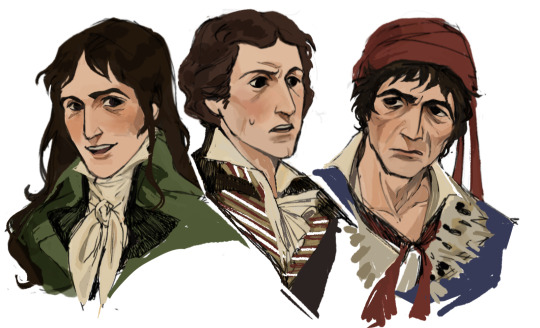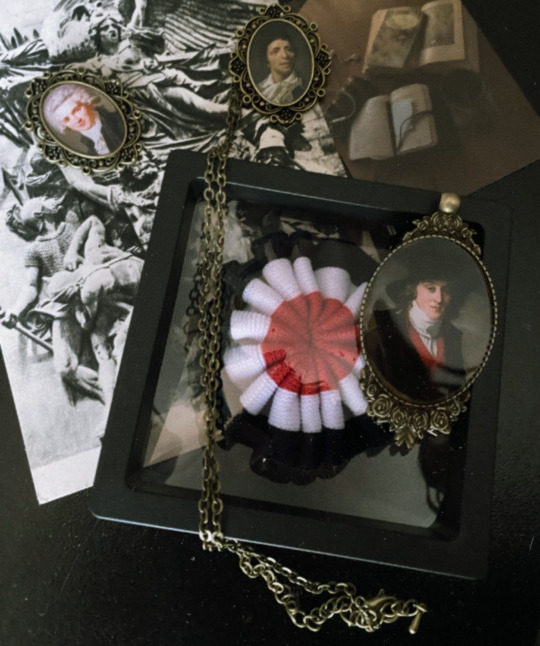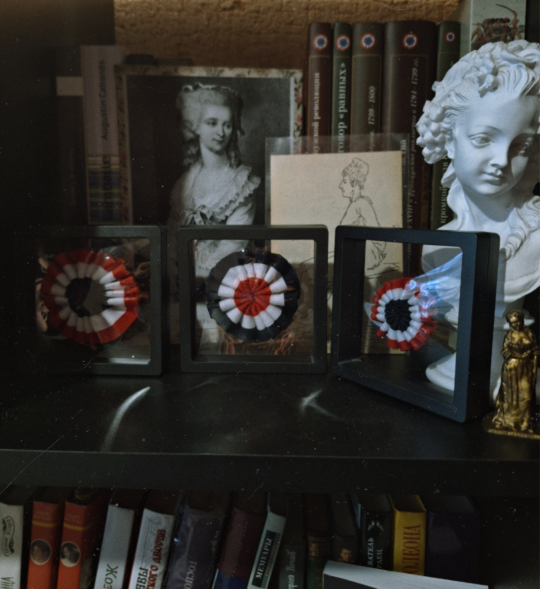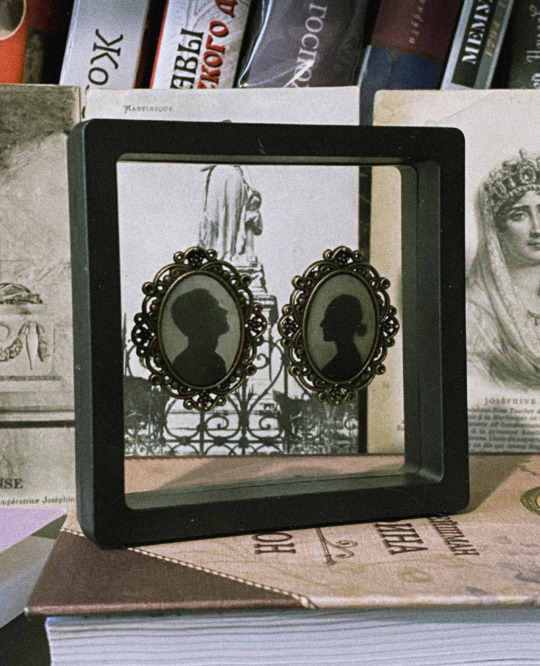#jean paul marat
Explore tagged Tumblr posts
Text
People of frev tumblr!!!
I NEED more Marat content I desire it PLEAASEEEE.
with love
Ieatlittlebabysicecream♡
20 notes
·
View notes
Text

Marat, Danton and Robespierre in a fragment of "Panorama de l'Histoire du siècle 1788-1889" (1889) by Alfred Stevens and Henri Gervex, Town Hall of Saint-Gilles, Belgium.
The woman on the stairs is Charlotte Corday, this particular fragment is indeed titled "Fragment du Panorama du Siècle (années 1790-1793)". Charlotte Corday et Jean-Paul Marat.
The two people behind the trio are François Barthélémy (left) and Jacques-Nicolas Billaud-Varenne (right).
References for the characters' names from Stevens, Gervex, Reinach "L'Histoire du Siècle", p. 36-37.
#frev#french revolution#marat#jean paul marat#danton#georges danton#robespierre#maximilien robespierre#charlotte corday#frev art#art#billaud#billaud varenne#françois barthelemy#jacques nicolas billaud varenne
112 notes
·
View notes
Text

catholics in 1793 be like
#frev#french revolution#maximilien robespierre#jeanbon saint andrè#jean baptiste joseph gobel#gobel#charles maurice de talleyrand#jacques roux#abbe sieyés#emmanuel joseph sieyés#jean paul marat#shitpost#frev art#art tag#history#history art
642 notes
·
View notes
Text

what if you were a revolutionary and so was your husband and you were by his side through the toughest period of his life and they murdered him and then turned him into a saint and the only things you have left of him are false perceptions, innocent or not, from the world at large, history strips you both of your humanity. Personally, I would've been on the news.
Finally living up to my title as the number one Simonne Evrard appreciator- Originally, I had planned an entire visual novel for the Halloween event but sadly (and frankly quite predictably) I got too ambitious and won't be able to publish it in time. I still do plan on finishing it by next year at the latest but alas, there's still loads to be done. This piece started out as me wanting to draw Marat as a ghost because it makes total sense to me and evolved into me being sad about Simmone. Either way, i do have some more lighthearted sketches coming soon!!
179 notes
·
View notes
Text

three very opinionated guys. ugh I have drawn our mother Marat so much that i can't even draw twinks these days
#I have to practice coloring because i always manage to make it look very grey#art is hard but I'll get there#töherryksiä ynnä muuta#jean paul marat#camille desmoulins#jacques pierre brissot#frev#what a month!!... haven't had time to draw#ill have time to fix my sleeping schedule anoyher time
438 notes
·
View notes
Text
jean paul marat was right actually and did nothing wrong. accomplished doctor and scientist. well-written newspaper. good and continually relevant political positions. AND he loved his wife.
58 notes
·
View notes
Text
i did something silly idk idk
155 notes
·
View notes
Text

Yea..
151 notes
·
View notes
Text
Extracts from the revolutionary newspaper L'Ami du Peuple stained with Marat's blood

Handwritten note : "These sheets of paper, stained with Marat's blood, were on the shelf of his bath when he was stabbed by Charlotte Corday. They were collected and kept by his sister Albertine Marat, who kindly offered them to me to add to my collection of patriotic monuments of the period."
There are several documents. They are all kept at the Bibliothèque Nationale de France but digitally available here.
120 notes
·
View notes
Text


forgot to post those here
(Thinking about doing a little comic about a silly little love story between Jacques Roux and Widow Hebert let me see if I can find enough material or just invent enough bull shit
#Marat#jean paul marat#saint just#Jacques Roux#character design#because no portrait for poor farmer priest boy#Art#my art#doodle#frev#french revolution
233 notes
·
View notes
Note
Have you ever drawn Marat? I'm so normal about him. I'm even more normaller about your art style

I have now!🔥🔥
#thank you for the prompt and your kind words#I wanted to answer with an actual image#and then I felt so angry at politicians last week that I finally felt inspired to finish the drawing lol#frev#french revolution#jean paul marat#marat#l' ami du peuple#frev art
148 notes
·
View notes
Note
Robespierre, Marat, and Saint-just making fun of George Washington de Laffayette (Laffayettes son)
Drawing three grown man bullying a child made my day a tad bit better

#french revolution#frev shitposting#jean paul marat#marat#antoine saint just#saint just#maximilien de robespierre#robespierre#georges washington de lafayette#grown men btw#divas even
20 notes
·
View notes
Text
Continuation of the Robespirre fan club gag lol- ended up being like a 7 page comic so here’s the first 2, Marat my spiritual animal 🫶🙏


#eleonore duplay and Marat team up is so random but I’m living for it lol#Marat secretly my fave revolutionary#frev#french revolution#robespierre#frev art#maximilien robespierre#antoine saint just#saint just#camille desmoulins#Marat#jean paul marat#eleonore duplay#she so pretty wth
139 notes
·
View notes
Text










incorrect frev
#i need a job#frev#french revolution#frev community#some of these are ooc#cringe but free but i’m also going to delete this in 3 days#maximilien robespierre#saint just#georges danton#camille desmoulins#fabre d’eglantine#herault de sechelles#jean paul marat#marquis de lafayette#georges couthon
193 notes
·
View notes
Text






Things that I recently made for my friends and for my tiny store 🌱
https://www.avito.ru/brands/4b65647be334bbddbd017cd3fda6e516?src=sharing
#history#history art#french history#napoleonic#napoleon#napoleon bonaparte#josephine beauharnais#napoleon and josephine#empress josephine#josephine bonaparte#antoine saint just#saint just#robespierre#maximilien robespierre#jean paul marat#frev#france#revolution#french revolution#jewelry#artists on tumblr#digital art
140 notes
·
View notes
Text

screaming in language that no one understand/of the rights that we grabbed with our own bleeding hands – Marat / Sade
#click for better quality#annoyed marat is my spirit animal#jean paul marat#frev#hope everyone had a peaceful holiday#(i want to put all lyrics here but i can't.. what a cruel world)
275 notes
·
View notes